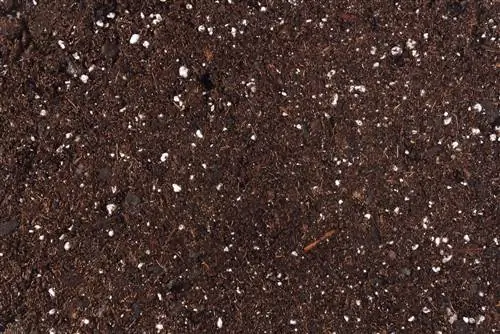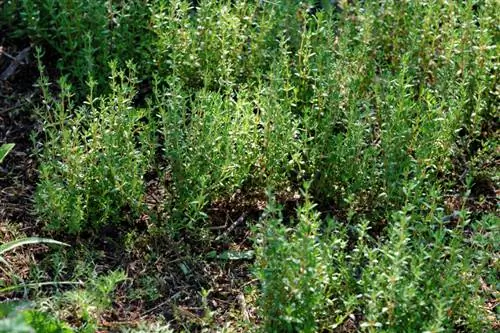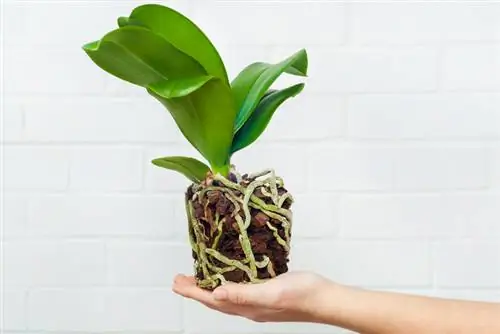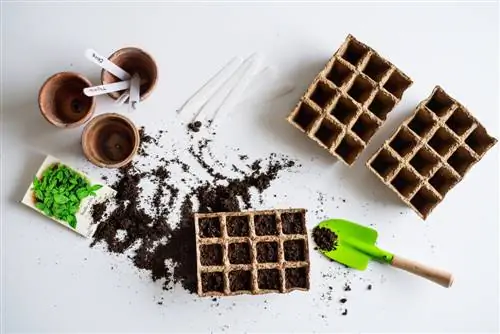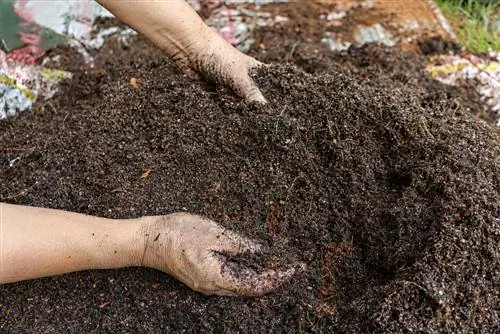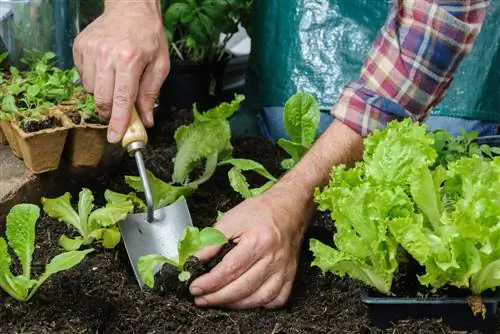- Author admin [email protected].
- Public 2024-01-05 20:48.
- Last modified 2025-01-23 11:22.
Potting soil is usually produced industrially, but you can also mix it yourself. The composition of both variants is almost the same.
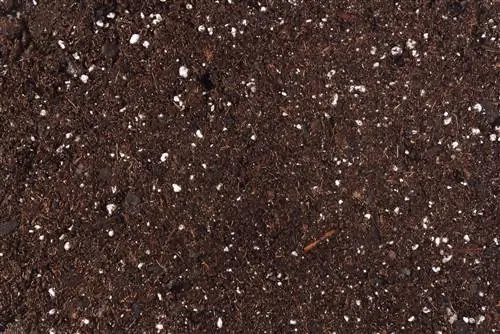
What components does potting soil consist of?
The composition of potting soil consists of peat, compost, fibers from wood or coconut, bark humus, clay granules, perlite, primary rock powder, horn shavings or meal and sand. These components serve to store water, improve the soil and provide nutrients to the plants.
The components of potting soil
Potting soil is mixed together from different substances:
- Peat
- Compost
- Fibres made from wood or coconut
- Bark humus
- clay granules
- Perlite
- Primitive rock flour
- Horn shavings or flour
- Sand
Peat
Common potting soil contains mostly (at least half) peat. This consists of rotten plant material and can store many times its weight in water. Peat is mined from the moors. However, environmentalists are taking action here because valuable moorland landscapes are being destroyed by peat mining. If you consider that only 1 mm of peat is created in a year, the objections to the use of peat are certainly justified. Meanwhile, attempts are being made to replace the peat with bark humus (composted tree bark) and fibers from wood and coconut. These substances also absorb water well and have the advantage that they do not make the soil acidic.
Compost
Another important ingredient is the mature compost. In the composting plant, but also in your own compost heap, plant materials are decomposed under the influence of oxygen and soil organisms. This produces, among other things, minerals that act as natural fertilizers.
Fiber materials and bark humus
They are made of composted tree bark, wood or coconut and serve as a soil improver and water storage in the earth. These components are added to the potting soil in order to avoid the need for peat.
Clay granules and perlite (from volcanic glass)
Both substances loosen the soil and store a lot of water.
Primitive rock flour
Grid rocks are usually ground industrially for this additive. The flour promotes the formation of humus and also improves the water-holding capacity of the soil.
Horn shavings or horn meal
Both are fertilizers made from ground horn or hooves from slaughtered cattle and ensure sufficient nitrogen in the soil.
Sand
Finely ground quartz sand can be mixed into the potting soil. This ensures that excess water or rain water drains away well. This means that no waterlogging can occur in the flower pot or bucket.

